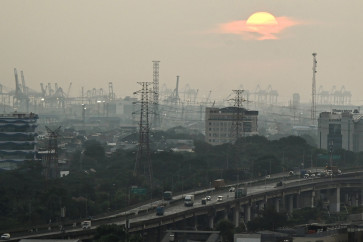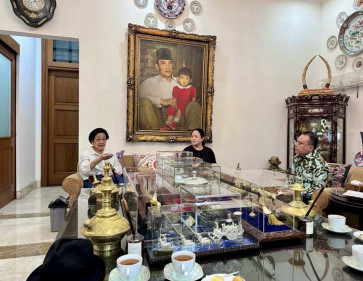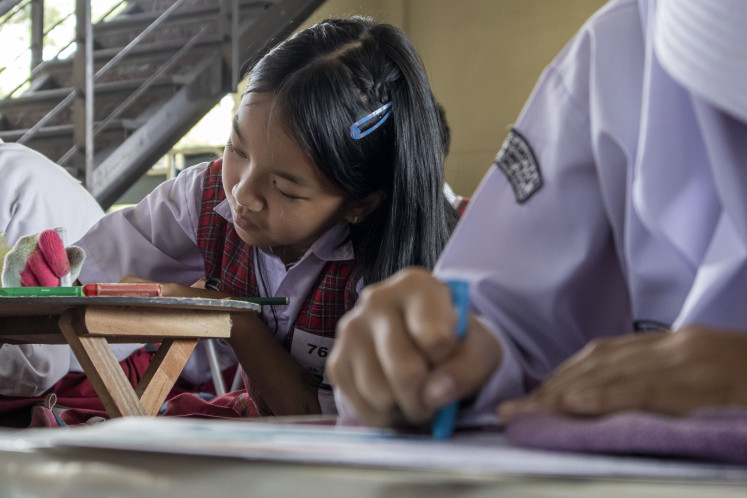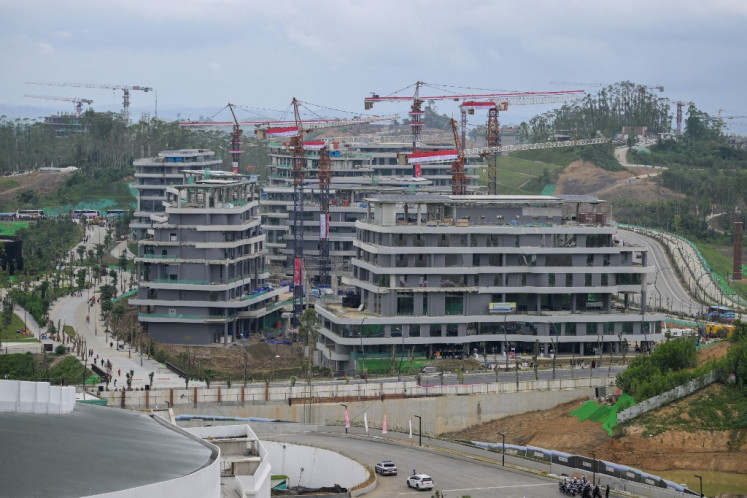A stroll amid holy temples in Central Java highland
With its 100 plus hectares surrounded by misty green hills, the temple compound in the Dieng highlands is a perfect spot for a healthy morning stroll
Change text size
Gift Premium Articles
to Anyone

With its 100 plus hectares surrounded by misty green hills, the temple compound in the Dieng highlands is a perfect spot for a healthy morning stroll.
Every tourist excursion should combine exercise and culture.
On this particular tour, a good place to start is the parking lot next to the Dieng tourism agency, close to the Arjuna temple complex.
Arjuna, you may recall, was one of the mighty Pandawa brothers in the Mahabharata. In fact, all the temples in Dieng are named after characters in the epic.
A stone road some 100 meters in length stretches from the parking lot to the Arjuna complex, where inside, you'll find five temples of various size: the Arjuna temple itself, along with the Srikandi, the Sembadra, the Punta Dewa and the Semar. Of course, walking around the complex isn't enough, as visitors will want to pop inside each of the structures.
Dating from the 7th century, the temples, unfortunately, are not intact, with many reliefs vandalized or faded with age. While catching your breath inside, rest your eyes on the potato farms that dot the landscape here and there. According to some locals, lush forests blanketed the region before agriculture was introduced.
From year to year and little by little, the forests were converted by farmers who needed land for vegetable cultivation. Though no secret among environmentalists or the public, rapid deforestation here seems to have little in the way of obstacles.
Decked out in layers of cloth and sturdy boots, farmers seemed unfazed by the temples' beauty -- or the presence of tourists -- as they chatted among themselves on the way back to their farms.
A kretek between their lips, farmers start their day before sunrise.
From the Arjuna temple compound, head east, where you'll find the office of the archeology agency. It's not the office you're after, but a cluster of temples nearby, the Gatotkaca temples. Six temples, similar in size and shape to those in the Arjuna complex, used to comprise the compound: the Gatotkaca, the Sentyaki, the Petruk, the Antareja, the Nakula Sadewa and the Nalagareng. Almost all are in ruins. Only the Gatotkaca temple remains, though not fully intact.
Here too, vandalism has left little of interest.
From there, you can head north along an elevated asphalt road where, on the left-hand side, you'll discover a huge pond -- the remnants of a volcanic crater -- whose still waters reflect the colors of the sun.
Local farmers claim they never get close to the pond because of its smell, believing it indicates the presence of poisonous gas.
The asphalt road continues on to a village with houses wrapped in tidy bamboo fences and stacks of dry wood neatly arranged outside.
Not far from the village is another large temple, standing in the midst of trees: the Bima temple -- named after the strongest of the Pandawa brothers. Better preserved, with clear and well-maintained reliefs adorning its walls, the Bima is renowned for its arca Kudhu, or Kudhu statues, depicting the torsos of several men, each with half a face. In the 1980s, several statues were stolen from the compound.
The faithful still frequent the temple to practice rituals on holy days. It's even been reported that former President Soeharto and his wife, Tien Soeharto, used to retreat to a small prayer house nearby to meditate. Go figure!
Some fifteen minutes from the temple is the Telaga Warna compound, a perfect spot for a rest. Restaurants and coffee shops are open for business, and you can find a range of liquids to soothe your thirst, from beer and hot coffee to traditional drinks such as purwoceng, a ginseng-like beverage only found in the Dieng area.
All in all, it takes a half hour to tour Dieng's four temple complexes. When you return to the parking lot near the tourism agency, make sure to have another glass of purwoceng.









